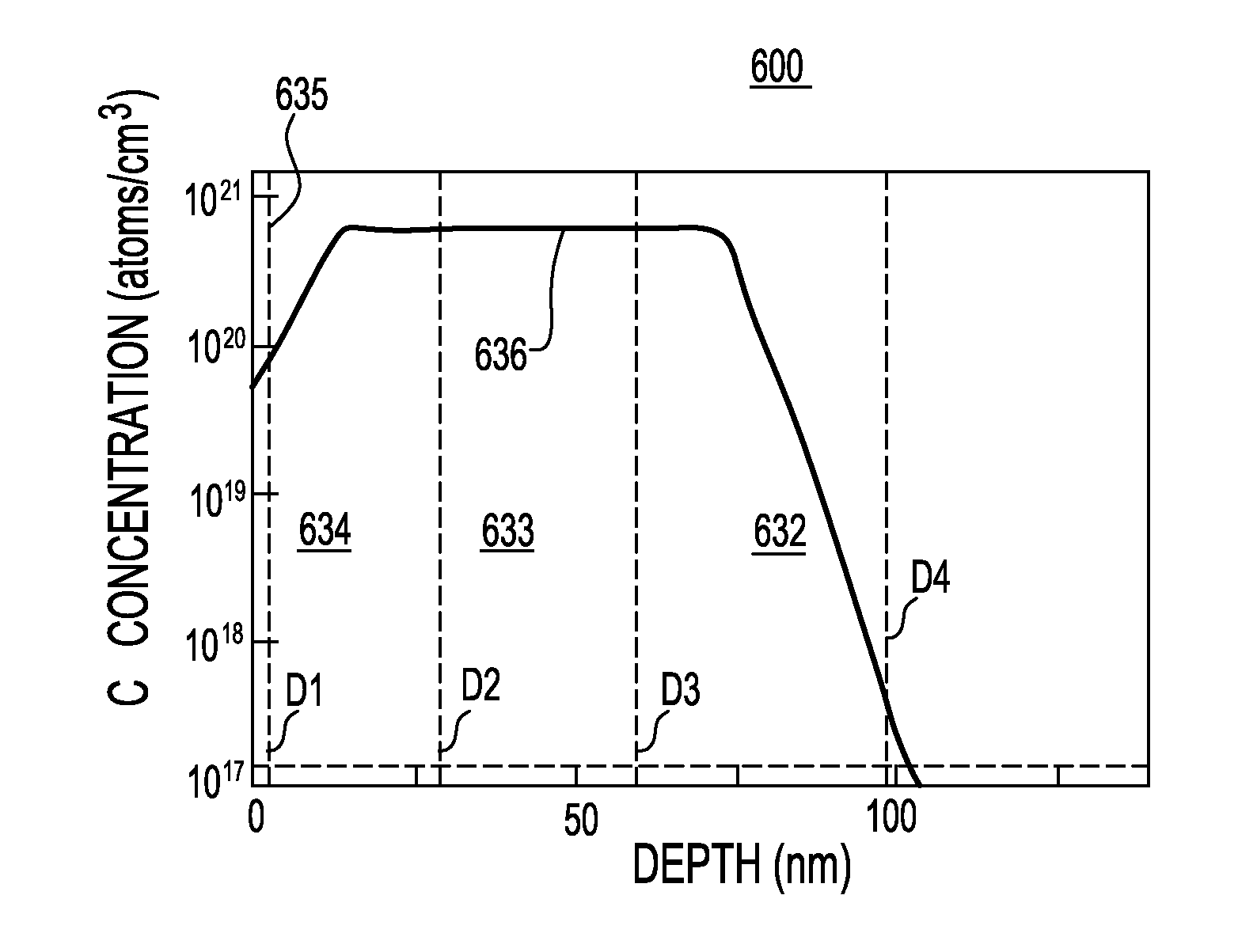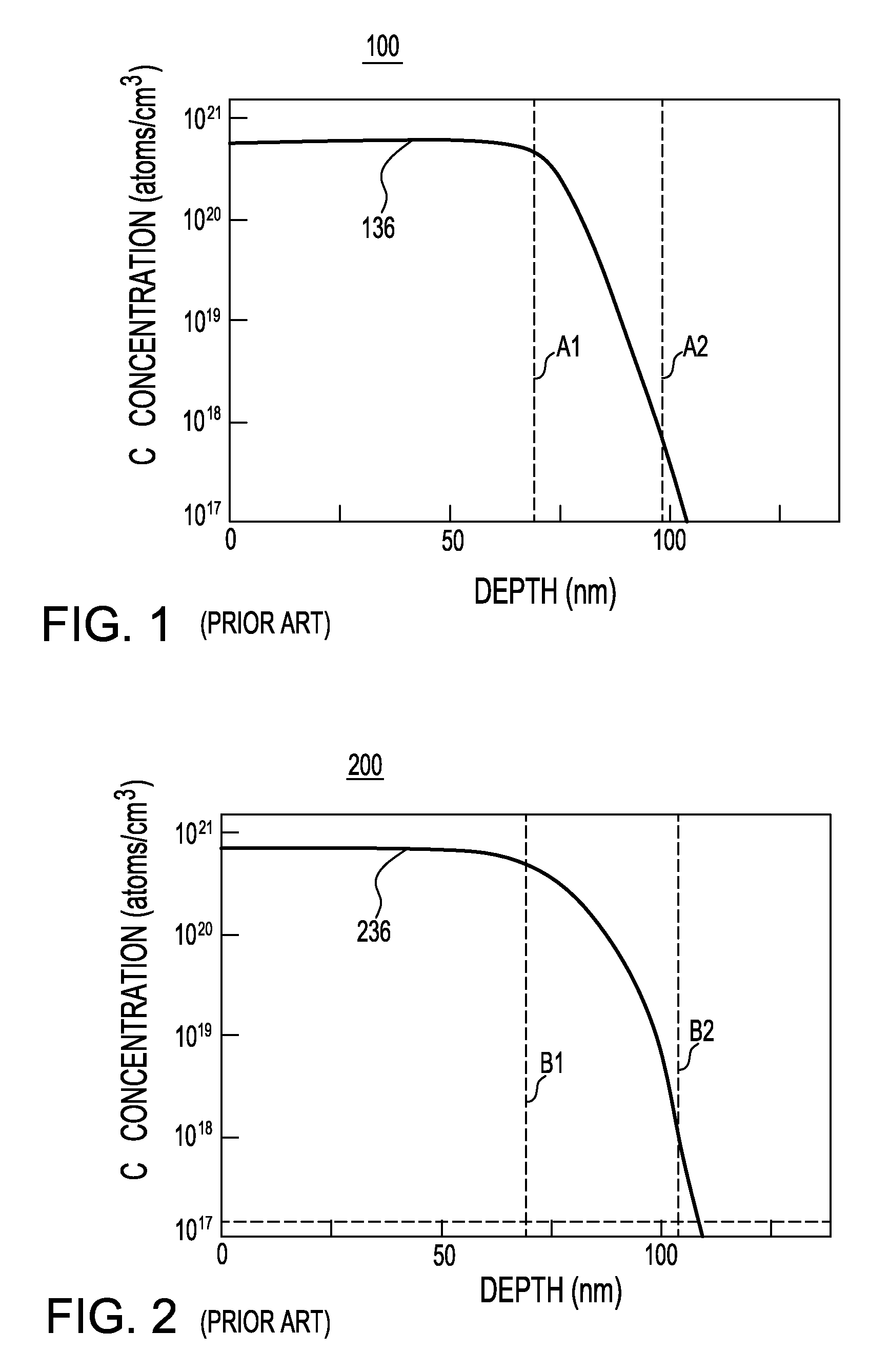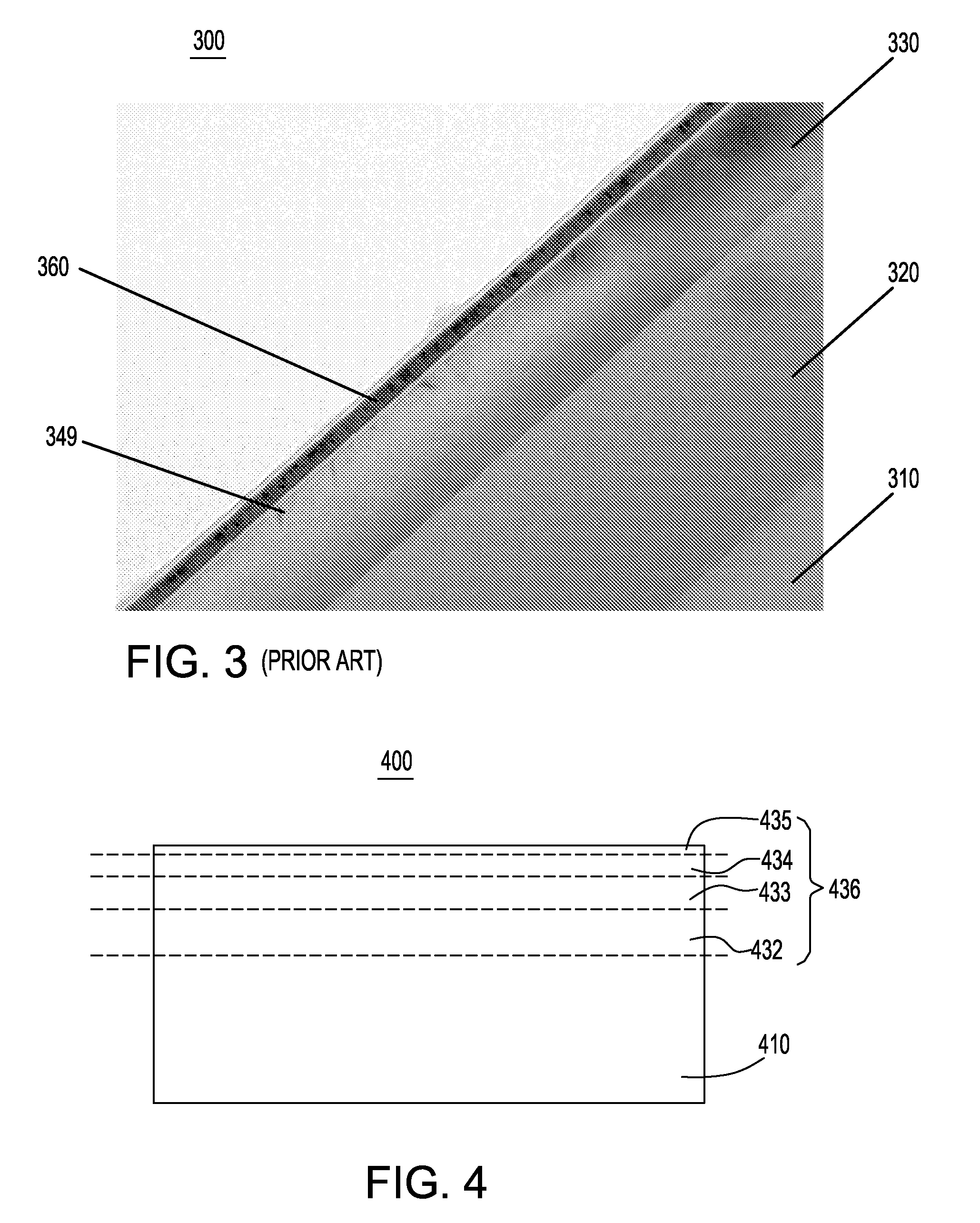Low defect Si:C layer with retrograde carbon profile
a carbon profile, low defect technology, applied in the direction of basic electric elements, electrical apparatus, semiconductor devices, etc., can solve the problem of not severe retrograding, achieve enhanced electron mobility, increase electron mobility in the channel, and improve the effect of electron mobility
- Summary
- Abstract
- Description
- Claims
- Application Information
AI Technical Summary
Benefits of technology
Problems solved by technology
Method used
Image
Examples
first embodiment
[0042]According to the present invention, a silicon substrate is provided in which carbon atoms are implanted by ion implantation. The silicon substrate may be a bulk substrate or a silicon-on-insulator substrate. FIG. 4 shows a bulk silicon substrate 400 with a carbon implanted silicon layer 436 and an underlying silicon layer 410 in which virtually no carbon is implanted. The boundary between the carbon implanted silicon layer 436 and the underlying silicon layer 410 is determined by the depth at which the carbon concentration is 3.5×1017 / cm3, or the solubility of carbon at the melting temperature of silicon. The thickness of the carbon implanted silicon layer 436 is the depth of the boundary between the carbon implanted silicon layer 436 and the underlying silicon layer 410.
[0043]In the case of a bulk silicon wafer, the carbon implanted silicon layer 436 is divided into four volumes of which the boundaries are represented by the four dotted lines in FIG. 4. The topmost dotted lin...
second embodiment
[0056]According to the present invention, a transistor structure 800 incorporating an active retrograde profile in the carbon concentration in Si:C layers is shown in FIG. 8. The transistor structure 800 comprises an underlying silicon layer 810, a buried oxide layer 820, a body of the transistor 830, a gate dielectric 842, a gate conductor stack 844, FET extensions 832, first spacers 852, second spacers 854, embedded Si:C layers without source / drain electrical doping 834, and embedded Si:C layer with source / drain electrical doping 836. Each of the two carbon substituted single crystal silicon layers includes both one of the embedded Si:C layers without source / drain electrical doping 834 and one of the embedded Si:C layers with source / drain electrical doping 836. While it is in principle possible to incorporate an Si:C layer only within the source or only within the drain, preferably both the source and drain incorporate an Si:C layer respectively.
[0057]Within the transistor structu...
PUM
| Property | Measurement | Unit |
|---|---|---|
| thickness | aaaaa | aaaaa |
| thickness | aaaaa | aaaaa |
| thickness | aaaaa | aaaaa |
Abstract
Description
Claims
Application Information
 Login to View More
Login to View More - R&D
- Intellectual Property
- Life Sciences
- Materials
- Tech Scout
- Unparalleled Data Quality
- Higher Quality Content
- 60% Fewer Hallucinations
Browse by: Latest US Patents, China's latest patents, Technical Efficacy Thesaurus, Application Domain, Technology Topic, Popular Technical Reports.
© 2025 PatSnap. All rights reserved.Legal|Privacy policy|Modern Slavery Act Transparency Statement|Sitemap|About US| Contact US: help@patsnap.com



